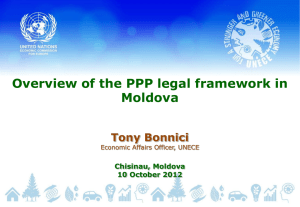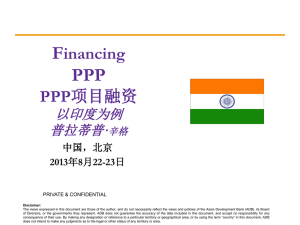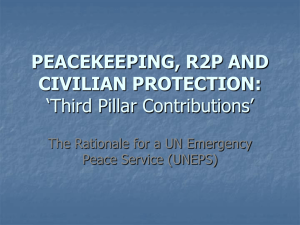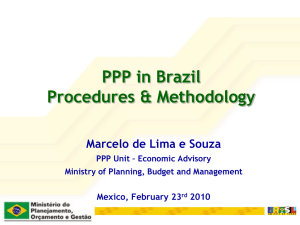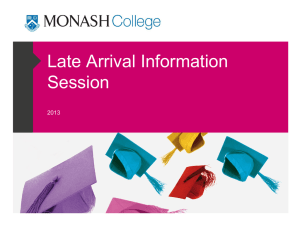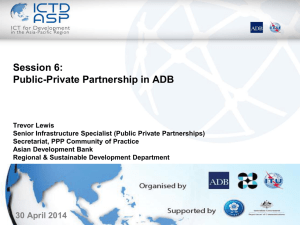Using Text Messaging to Enhance Parents` Engagement in a Parent
advertisement
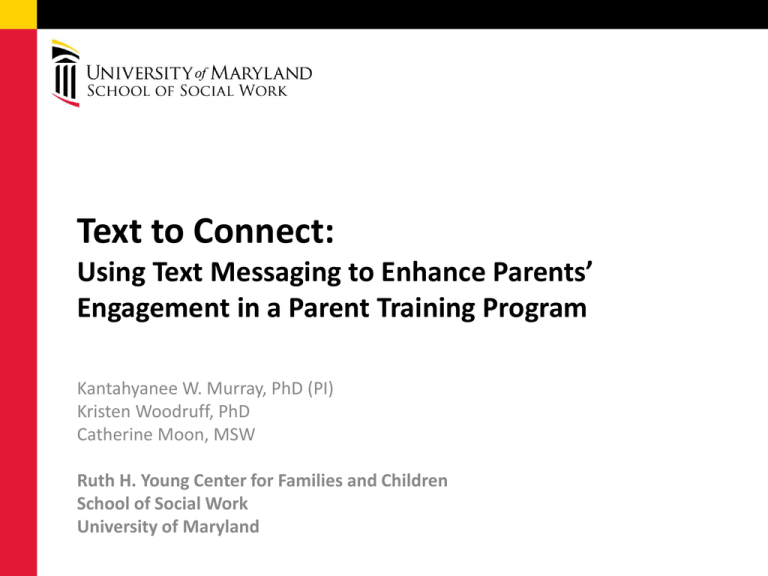
Text to Connect: Using Text Messaging to Enhance Parents’ Engagement in a Parent Training Program Kantahyanee W. Murray, PhD (PI) Kristen Woodruff, PhD Catherine Moon, MSW Ruth H. Young Center for Families and Children School of Social Work University of Maryland Text to Connect • Describe methods and findings of the Text To Connect Study • Identify lessons learned • Highlight future directions for research Parent training programs for the prevention of child maltreatment • In FFY 2011, there were 681,000 victims of child abuse and neglect (US DHHS, 2012). • 400,000 child welfare involved parents receive parent training services each year (US DHHS, 2005). • Parent training programs aim to reduce risk factors and enhance protective factors known to promote child safety, permanency and well-being. Engaging parents is a challenge • Parent-training programs typically suffer from high attrition and low completion rates. – Lack of transportation, child care – Scheduling constraints and demands – Lack of cultural competence of facilitators • The application of new technologies may offer a solution Engaging parents is a challenge Do text message session reminders increase attendance and completion in the Positive Parenting Program (PPP)? Methods • Study Recruitment (2011 – 2012, 10 cycles) – Parents screened at intake or check-in and, if eligible, study described. – UM provided informed consent and enrolled parents who agreed into the study. – Study incentives: $10 gift cards at pre-test and at post-test. – 50% of parents enrolled in designated PPP study classes consented to participate in the study (N=117 of 234) • Randomization into Intervention and Control Groups – Enhanced PPP (intervention: PPP class + text message reminder) – Standard PPP (control, services as usual: PPP class) Methods • Measurement – Attendance & completion: Sign-in sheet, attendance documentation form (includes make-up sessions) – Receipt of text messages: Sign-in sheet, text message records – Demographic data: intake forms Methods: Text messaging procedures 10 PPP classes (1 session per week) + Text message session reminders sent by an Intern (starting week 2) Sample • N=117 participants • Age 18-53, 33 years old on average (M=32.6, SD=8.39) • 76% Female • 80% African American • 74% with income under $10,000/year • 33% no HS degree or GED Random Assignment Of the 117 participants: Enhanced PPP: N=63 Standard PPP: N=54 • No significant differences between intervention and control groups by age, gender, race, education or income. Findings: Implementation process • Average of 8 text messages (M = 8.1, SD = 1.21) sent • Of the people assigned to Texting Group: – 87% to 100% (each week)were sent text messages – 61% to 88% (each week) reported receiving the text message, among those reporting on this. • Cell phone accessibility was high but for some, – Access to cell phone, but no text message plan – No cell phone, used relative or friend’s cell Findings: Attendance & Completion • Attendance: Attended class on the specified day. • Make-up Class: Attended make-up class. • Completion: Met the PPP requirement of completing all sessions (up to 2 make-up classes allowed). Attendance Findings (N=117) • Participants attended 6.9 classes on average (M=6.9, SD=2.75) • Enhanced and Standard classes had similar attendance, on average. (No statistically significant difference). Enhanced PPP: 7.0 classes Standard PPP: 6.7 classes (SD=2.63) (SD=2.90) Attendance Findings (N=117) • 59.8% of participants took make up classes. • 81% of 84 completers participated in make-up sessions. • Trend toward Enhanced group being more likely to take makeup classes compared to Standard Group (χ2=2.655, p=.103) Enhanced PPP: 67% make up classes Standard PPP: 52% make up classes Weekly PPP Attendance by Study Group (N=117) 100% 90% 80% 79% Enhanced completed 63% Standard completed 59% Non-study participants completed 70% 60% 50% 40% 30% Make-up: N=81% of 84 completers participated in make-up sessions 20% 10% 0% Week Week Week Week Week Week Week Week Week Week 1 2 3 4 5 6 7 8 9 10 Standard - adjusted** (N=54, or fewer) Enhanced - adjusted* (n=61, or fewer) *The denominator was adjusted in Week 3 and Week 10 to reflect the N with the opportunity to attend, subtracting the number of people for whom class was cancelled. Class cancellation occurred during two cycles in Standard classes. The adjustment also effects the Enhanced denominator, as some of this group received text messages but attended the standard class. PPP Completion Rates 100% 90% 80% 70% 60% 50% 40% 30% 20% 10% 0% 79% 72% 63% Standard (n=54) Enhanced (n=63) N=117 Study Participants 59% Study Participants (n=117) NonParticipant (n=117) N=234 Parents Enrolled in these Classes *Statistically significant difference between Enhanced and Standard (χ2=3.863, p=.049) Multivariate Analyses Does Intervention Group Predict Completion Controlling for other Factors? • Logistic regression using PASW 18 (SPSS, Inc.) • Modeling PPP Completion(N=115), tested for: – – – – Gender Race (African American vs. White) Make-up session(s) completed (yes/no) Group (Enhanced/Texting vs. Standard) • Model was significant (χ2=62.331, df=4, p=<.0005) • Make-up session predicted completion (Wald=27.486, p<.0005) • Group (Enhanced/Texting), gender, and race did not predict completion. Discussion: Attendance and Completion • Higher proportion of Texting group completed PPP (but did not increase actual attendance). • Taking Make-up Class predicted completion. • Findings suggest that text message reminders keep the class on the participant’s radar/engaged, and combined with the make up classes, facilitated greater completion. Limitations • Lack of fidelity to texting protocol. • Facilitators were not blind to which classes were involved in the research. • Variables not available for analyses, such as – Obstacles to attendance cited in literature include: single, more children, chaotic stressors; could not test for these, not available in our data set. – Previous involvement with child welfare service – Whether or not these are mandated clients Implications • Future Considerations for Implementation – Which staff person/intern is available to send text messages consistently? – Could text message be sent only for select sessions? – How will cell phone numbers be collected and updated? – How will people without cell phones/text messaging be engaged? – Cost of sending texts • 5 cents per text, plus cost of maintaining cell phone Implementation Drivers Implementation Drivers National Implementation Research Network (NIRN) Fixsen, D. L., Naoom, S. F., Blase, K. A., Friedman, R. M. & Wallace, F. (2005).Implementation Research: A Synthesis of the Literature. Tampa, FL: University of South Florida, Louis de la Parte Florida Mental Health Institute, The National Implementation Research Network (FMHI Publication #231). Implementation Drivers • Leadership: Is there sufficient administrator byin? How frequently will leaders communicate about the practice change? • Facilitative Administration: What policies and procedures should be in place to support practice change? • Selection: Who should send the text messages? • Training: What is the content? Who will be trained and how often? Future directions for research Future directions for research 2013-2014 Application of the mHealth Development and Evaluation framework (Whitaker, Merry, Dorey, & Maddison, 2012) Parents and caregivers who participated in the Text to Connect Study Administrators, Family Education staff, and TFT Research Interns Kristen Woodruff Catherine Moon Philip Osteen Ruth H. Young Center for Families and Children Thank you!


